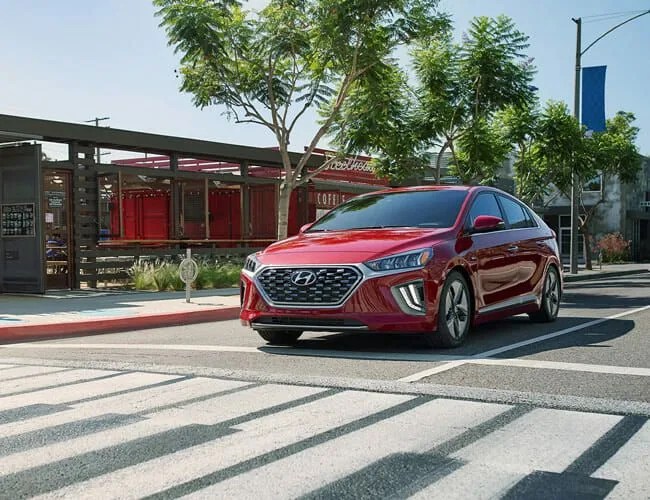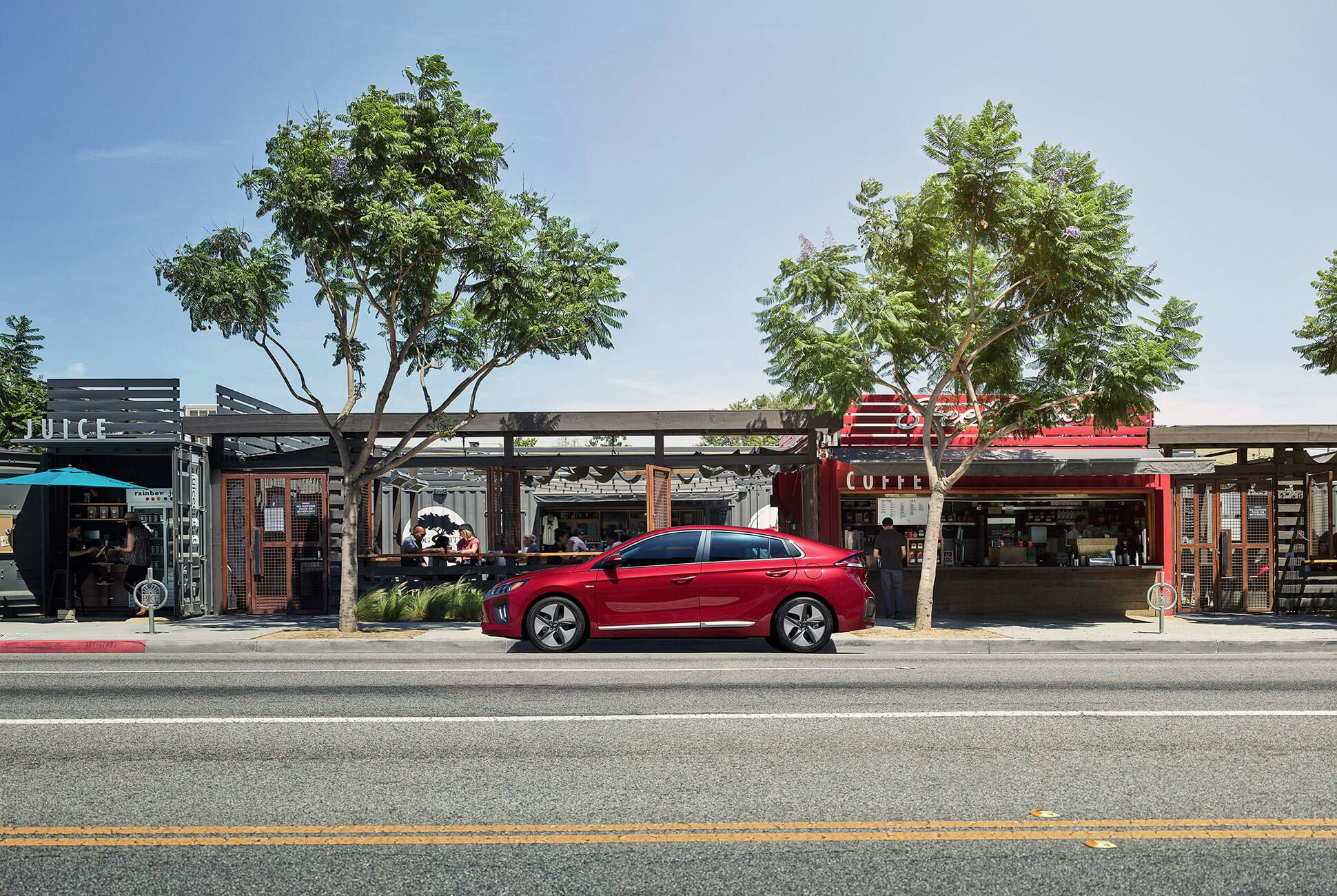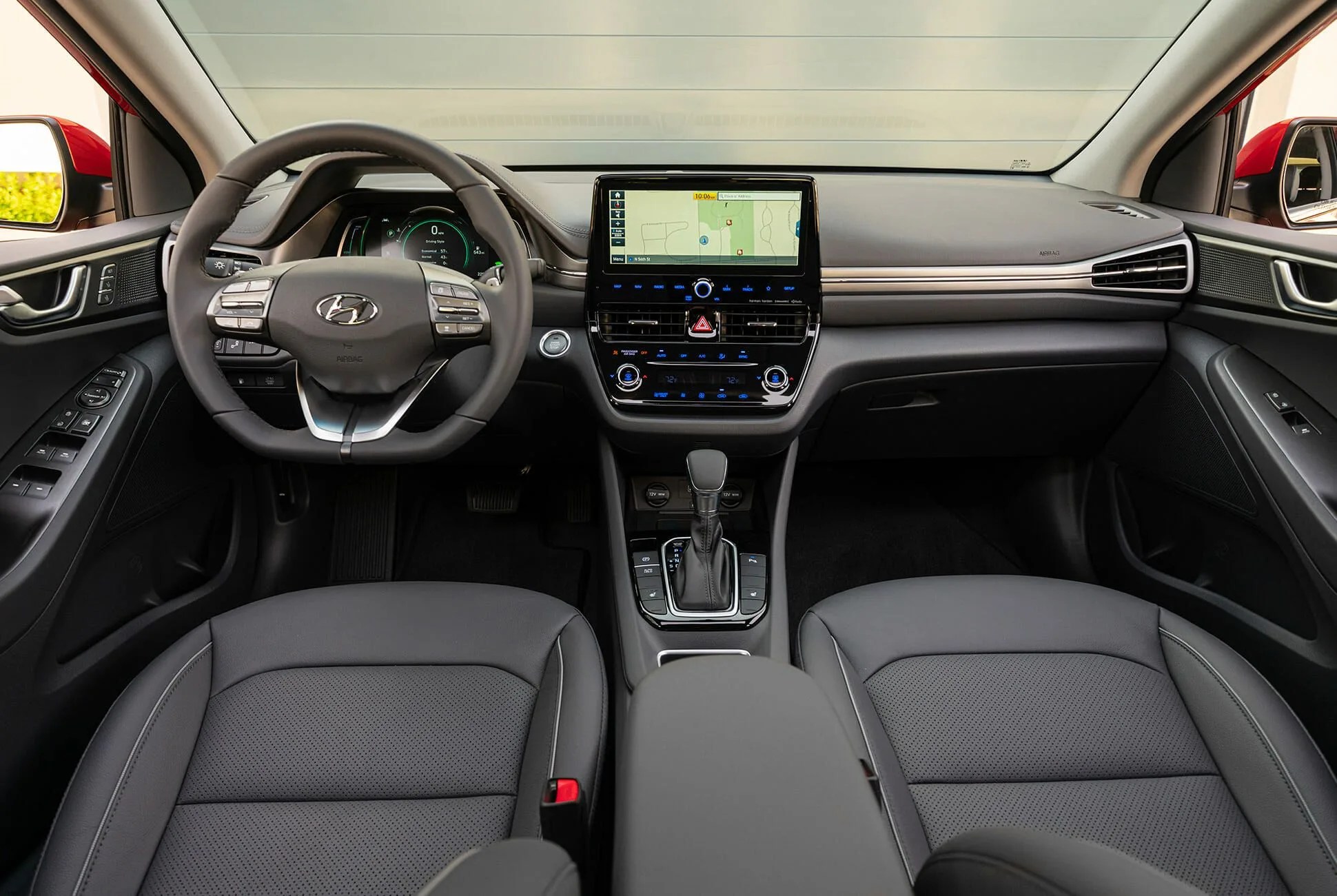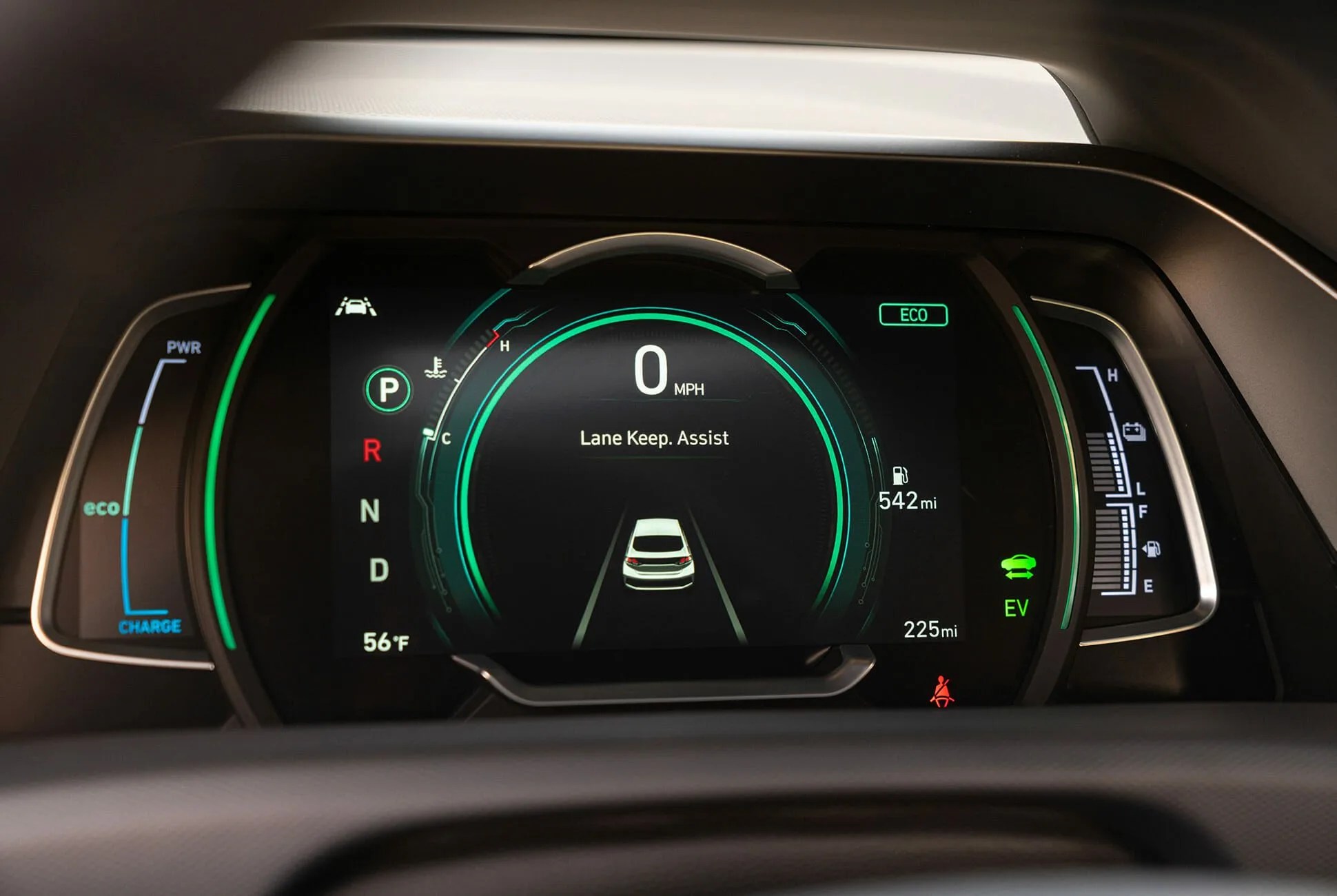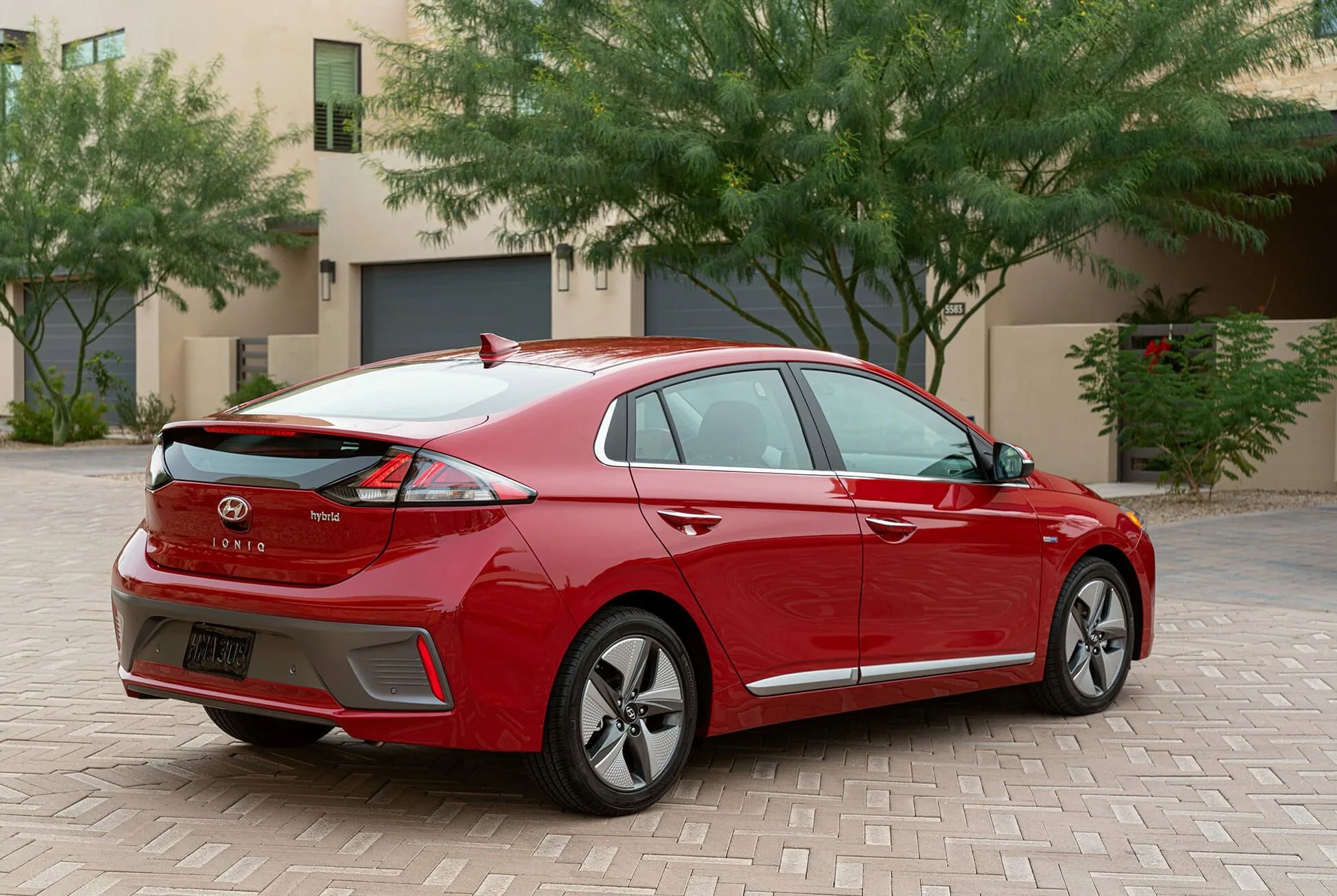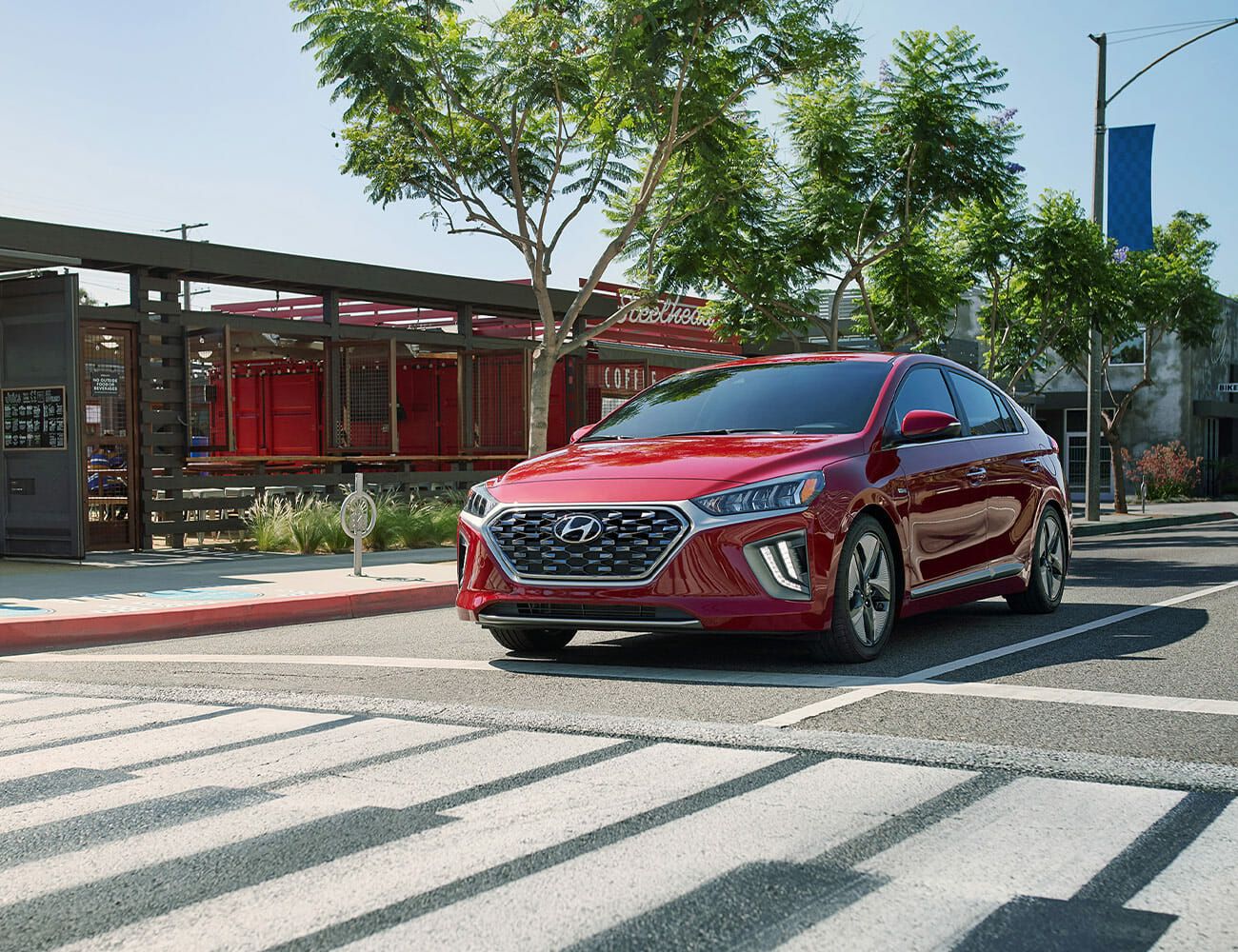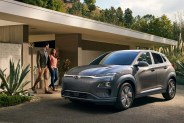7 photos
Hyundai launched the Ioniq to fight the Toyota Prius on its own turf. It’s a compact four-door liftback, landing in that busy gray area between sedan and hatchback. It comes in three versions: a limited-range EV, a plug-in hybrid and a regular mild hybrid.
The latter, which I drove for a few days, is the most fuel-efficient car sold in America — at least, among those still powered by fossils. The base model Ioniq Hybrid can earn 58 miles per gallon combined; my highfalutin’ Limited trim example is good for 55 mpg. That efficiency — not sportiness or sex appeal — is why one buys a Hyundai Ioniq. But should it be your eco-cruiser of choice?
There’s no disputing that full-electric cars are more environmentally friendly than a mild hybrid — and they’re almost always more fun to drive. Hyundai’s Kona Electric, for instance, delivers 291 lb-ft of instant torque to help accelerate through everyday traffic, and you can broadcast your zero-emissions status with a smug vanity plate.
The Ioniq Hybrid does offer one critical advantage over comparable EVs (not to mention the Toyota Prius): it’s [expletive deleted] cheap. The base Hybrid Blue trim Ioniq starts at just $22,200; that’s about $15,000 less than a bare-bones electric car and about $2,000 cheaper than a Prius. And perhaps best of all for many buyers: unlike many vehicles dedicated to being green, it feels like a normal car.
